VLC Media Player is a widely used multimedia player known for its compatibility with various video file formats. However, it is not uncommon for users to encounter VLC not playing videos. If you are facing this problem, there are several troubleshooting methods you can try to resolve the issue and get your videos playing smoothly. In this comprehensive guide, we will explore the reasons behind VLC not playing videos and provide step-by-step solutions to fix the problem.
In this article
Common Errors You May Encounter While Playing Videos
Before delving into the solutions, it is essential to understand the common errors you may encounter while trying to play videos in VLC. These errors can help you identify the specific issue you are facing and guide you towards the appropriate troubleshooting methods.
Here are three common errors:
- Playback Error: This error occurs when the video file you are trying to play is not supported by VLC. It could be due to compression issues or incompatible codecs.
- Freezing: If your video files were interrupted during the download process, they may become corrupted and cause freezing issues during playback.
- Codec Issue: VLC requires specific codecs to play different video file formats. If the necessary codec for your video is missing, VLC will not be able to play the file properly.
Causes of VLC Player Not Playing Videos
Understanding the underlying causes of VLC not playing videos is crucial in finding the appropriate solutions for the aforementioned errors.
Here are some common causes:
- Missing Codecs: VLC relies on codecs to decode and play different video formats. If the necessary codec for videos is missing or outdated, VLC may fail to play them.
- Outdated VLC Version or Operating System: Running an outdated version of VLC or operating system can lead to compatibility issues with videos.
- Incorrect Video Settings: Misconfigured video settings within VLC can cause problems with playing videos. This includes issues with audio tracks, synchronization, or output modules.
- Corrupted File: If the file itself is corrupted or incomplete, VLC may struggle to play it properly.
- Third-Party Applications: Video editors, converters, or other third-party applications may alter the file, leading to playback issues in VLC.
More to read: Top 5 Fixes for VLC Media Player Not Showing Video Issues
4 Methods to Resolve the VLC Not Playing Videos Issue
Now that we have identified the common errors and causes, let's explore the troubleshooting methods to resolve the VLC not playing videos issue.
Method 1: Enable the Automatic Repair Feature
VLC Media Player provides an automatic repair feature that can fix minor issues with video files. By enabling this feature, VLC will attempt to repair damaged or incomplete AVI files automatically. Here's how you can enable the automatic repair feature:
- Launch VLC Media Player then click on Tools in the menu bar.

- Select Preferences from the drop-down menu.

- In the Preferences window, click on the Input & Codecs option.

- Under the "Damaged or incomplete AVI file" dropdown menu, choose Always Fix.

Enabling this feature allows VLC to repair damaged AVI files when opening them. However, please note that this feature may not work for all file types. If your video is still not playing, consider trying alternative methods.
Method 2: Change the Audio-Video Settings
Issues with the audio or video components of your video file can cause VLC to fail during playback. Changing the related settings within VLC can help resolve these issues. Follow these steps to modify the audio-video settings:
- Launch VLC Media Player and go to the Menu.

- Click on Preferences to open the Preferences window.

- Check if both the Audio and Video components are enabled.


- If you encounter any syncing issues, navigate to Settings, then Adjustment and Effects, lastly, Synchronization. Adjust the audio track synchronization value accordingly. Positive values increase audio delay, while negative values speed up the audio in your video file.

- Alternatively, you can use Windows Media Player if your video files are not playing correctly on VLC. Open Windows Media Player, go to Menu. Then, Options and Performance, and adjust the frames to optimize audio or video-related configurations.

Changing the audio-video settings within VLC or using Windows Media Player can help resolve issues related to audio or video components of your video files.
Method 3: Configure the Video Output Mode
VLC Media Player offers different output drivers, such as DirectX and OpenGL, which manage video functionalities. Configuring the video output mode can help resolve VLC not playing videos. Here's how to configure the video output mode:
- Launch VLC Media Player and then go to Tools then Preferences.

- Click on the Video tab in the Preferences window.

- From the drop-down menu next to the Output field, choose an appropriate option such as OpenGL or DirectX. Alternatively, select Automatic to let VLC choose the best output mode.

Configuring the video output mode can help resolve video playback issues in VLC. Try playing your video file again to check if the problem is resolved.
Method 4: Repair Videos Using Repair Software
If the methods mentioned above don't resolve the issue and you suspect that your video file is corrupted, it's time to turn to professional video repair software like Wondershare Repairit.
Designed to handle various video corruption issues such as damaged headers, missing video or audio, dropped frames, and more, Repairit can effectively restore your video files and enable smooth playback in VLC.
By utilizing dedicated video repair software like this, you can confidently tackle corruption issues with your videos and ensure seamless playback in VLC.
Tired of encountering issues with your video not playing in VLC due to damage or corruption? Don't worry, getting started with repairing your videos is as easy as pie with Repairit - Video Repair. This tool is packed with amazing features designed to solve your problem effortlessly.
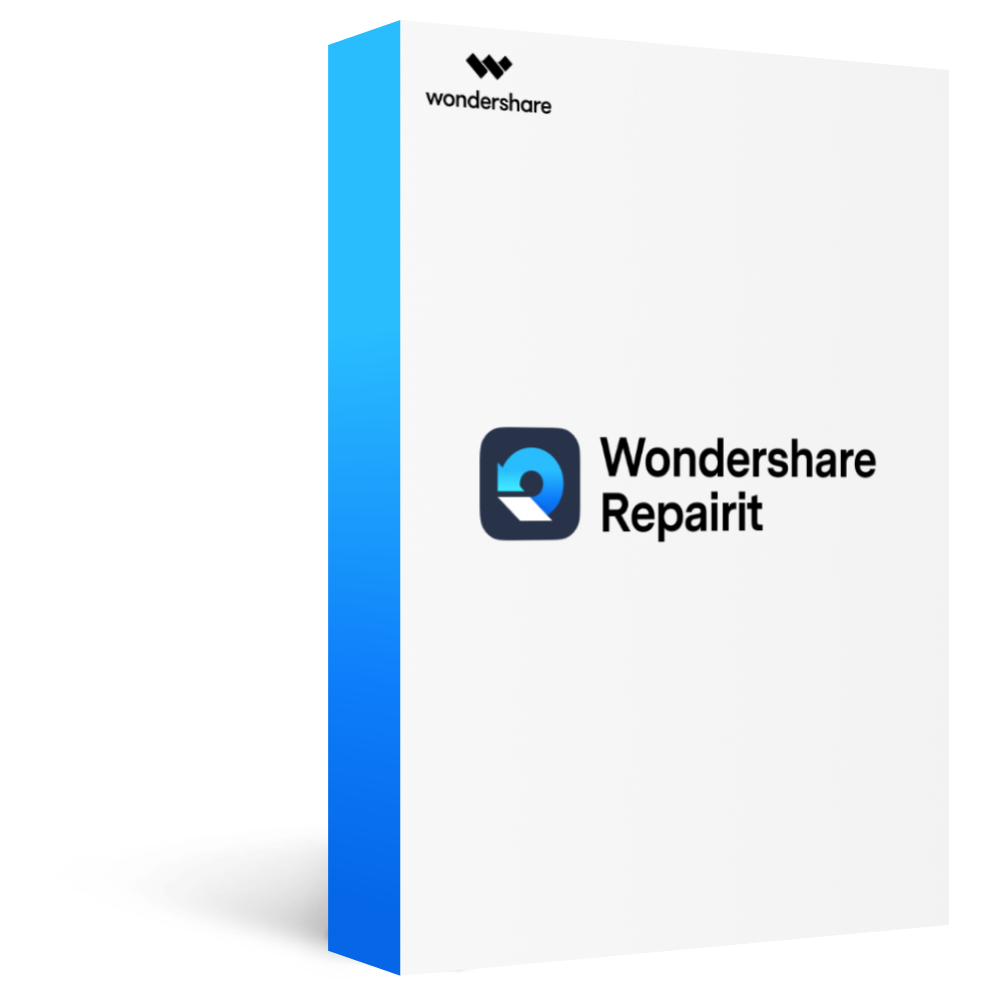
-
Repair damaged videos with all levels of corruption, such as video not playing, video no sound, out-of-sync video or audio, playback errors, header corruption, flickering video, missing video codec, etc.
-
Repair full HD, 4K, and 8K videos and support 18 popular formats, including MOV, MP4, M2TS, INSV, M4V, WMV, MPEG, ASF, etc.
-
Repair damaged or corrupted videos caused by video compression, system crash, video format change, etc.
-
Repair critically damaged or corrupted videos available on SD cards, mobile phones, cameras, USB flash drives, etc.
-
Repairit has a quick and advanced scanning mode. You can use either depending on the level of corruption the video file has undergone.
-
No limit to the number and size of the repairable videos.
-
Support Windows 11/10/8/7/Vista, Windows Server 2003/2008/2012/2016/2019/2022, and macOS 10.10~macOS 13.
Here's a tutorial:
Step 1: Download and install the Wondershare Repairit software on your Mac or Windows computer. Open the program. Click on the 'More Types Repair' option, then select 'Video Repair' Now, click the '+ Add' button to import your corrupted video files that VLC won't play.
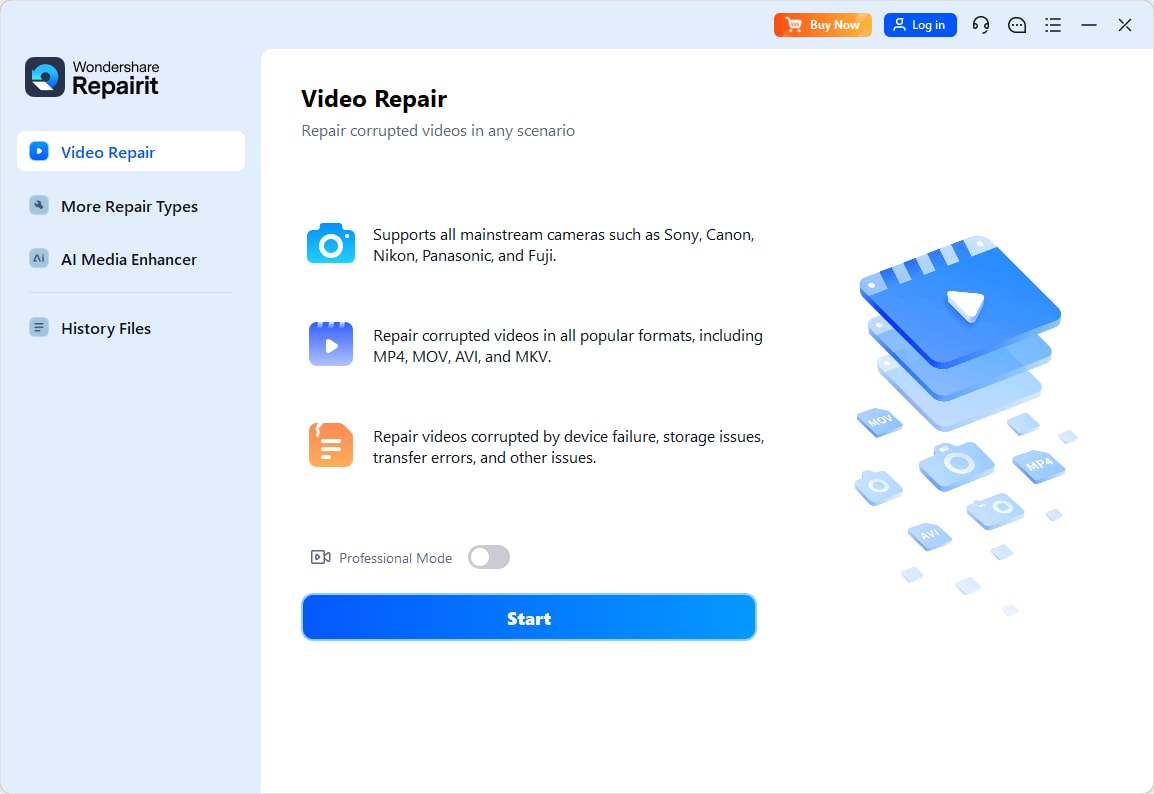
Step 2: After adding your video files, Wondershare Repairit will display a list of the uploaded files and their details. Click 'Repair' to initiate the video repair process.
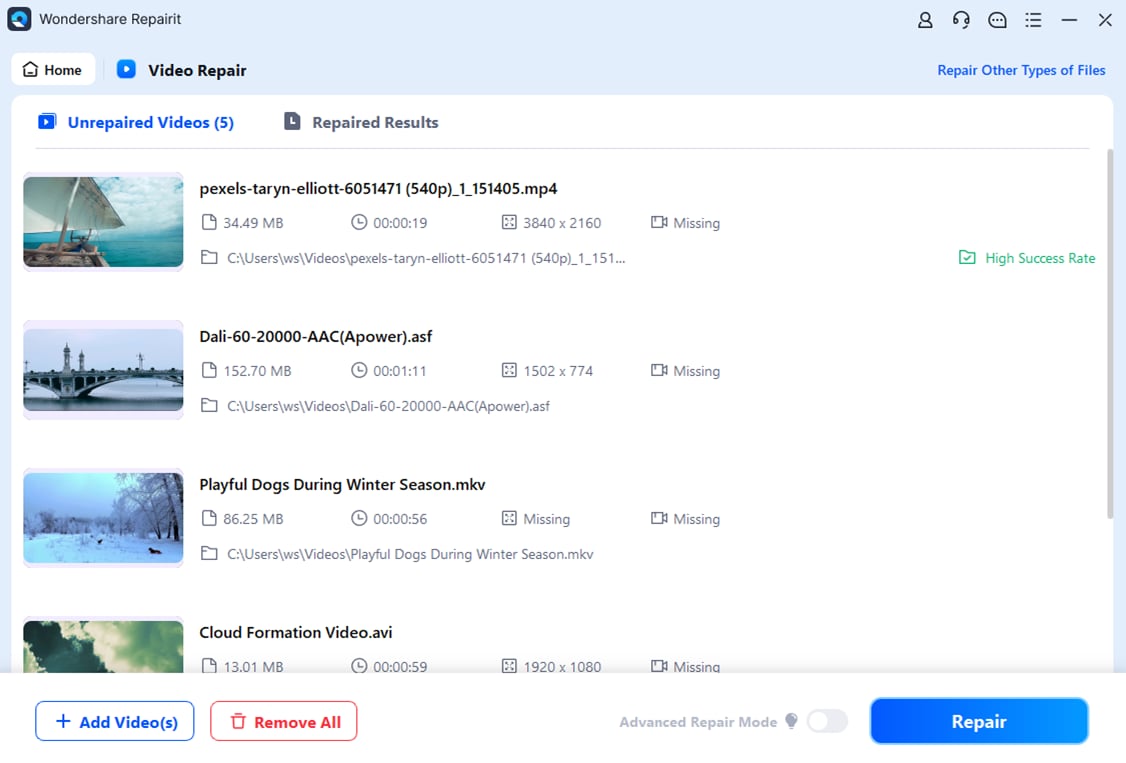
Step 3: Once the repair process is complete, you can preview the fixed video to ensure it meets your expectations. If you are satisfied with the repaired video, click the 'Save' button to preserve the fixed video file to your desired location. Play the file using the VLC application to see the difference.
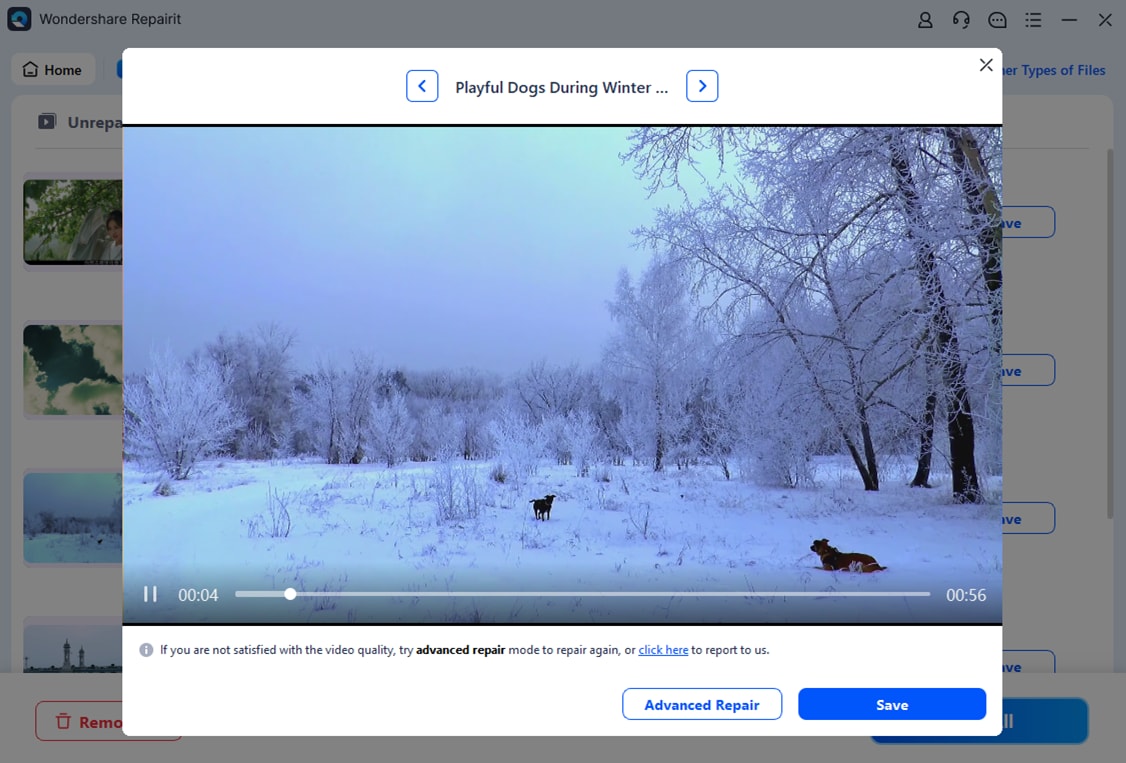
Step 4: If videos were severely damaged and the initial repair did not come out positive, you can move on to the 'Advanced Video Repair' mode. This mode utilizes sample video files to increase the video repair rate. Ensure that the sample video is in MP4 format and originates from the same device.
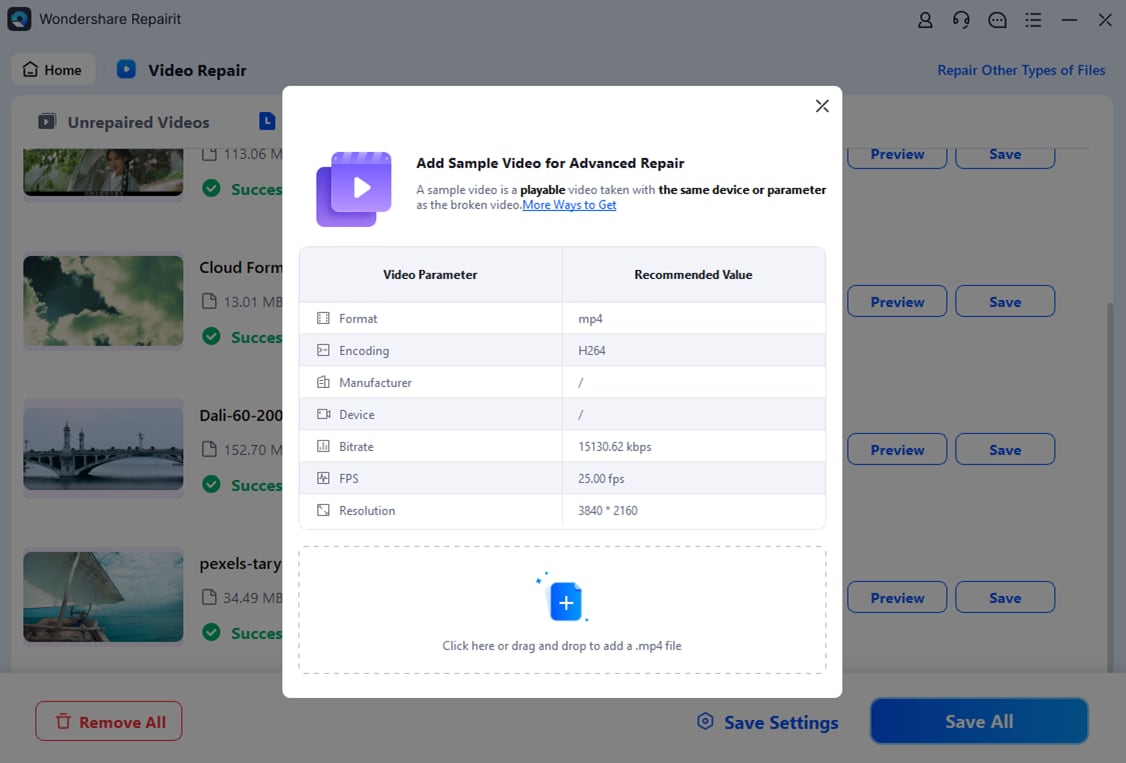
Wondershare Repairit will save your repaired video files in the location you specified, allowing you to seamlessly enjoy your videos without any issues in VLC.
Conclusion
Encountering issues with VLC Media Player not playing videos can be frustrating. However, by understanding the common errors and causes, as well as implementing the appropriate troubleshooting methods, you can resolve these issues effectively. Try enabling the automatic repair feature, changing audio-video settings, configuring the video output mode, or using video repair software to fix corrupted files. With these solutions, you can enjoy seamless video playback in VLC Media Player.
FAQ
-
Why is VLC not playing videos?
There are several potential reasons for VLC not playing videos, including missing codecs, outdated software, misconfigured settings, or file corruption. -
Are there any preventive measures to avoid video playback issues in VLC?
To prevent video playback issues in VLC, ensure that you have the latest version of VLC installed, keep your codecs up to date, and download video files from reliable sources. Additionally, avoid interrupting downloads and transfers to minimize the risk of file corruption. -
Can I use VLC Media Player to play other video formats?
Yes, VLC Media Player supports a wide range of video formats, including AVI, MKV, MOV, and more. It is known for its versatility and compatibility with various multimedia file types.



 ChatGPT
ChatGPT
 Perplexity
Perplexity
 Google AI Mode
Google AI Mode
 Grok
Grok
